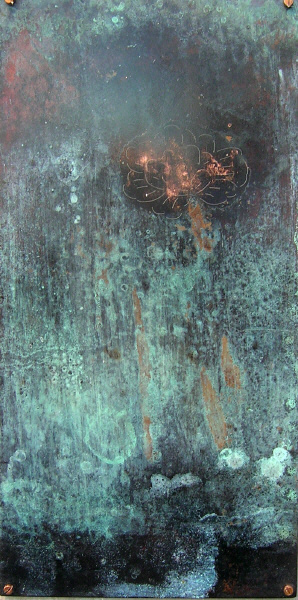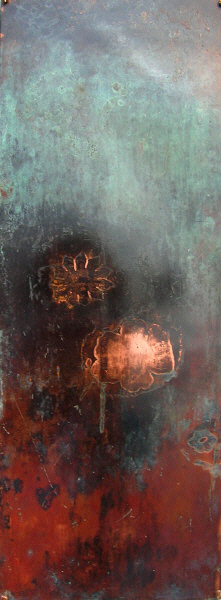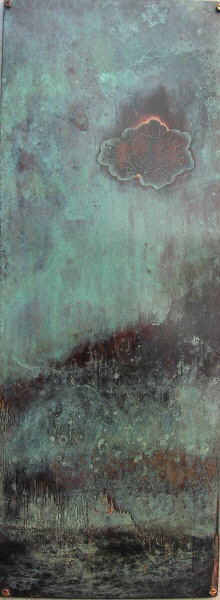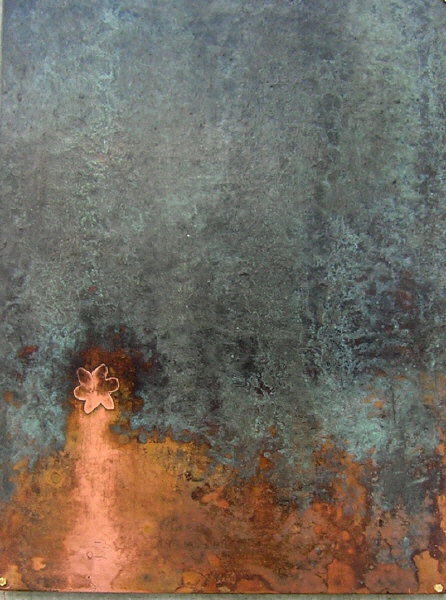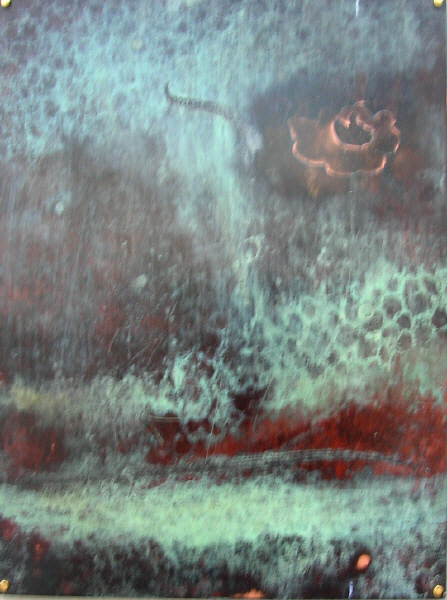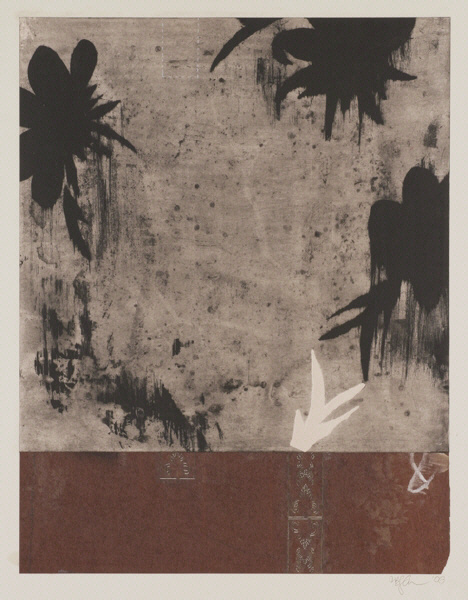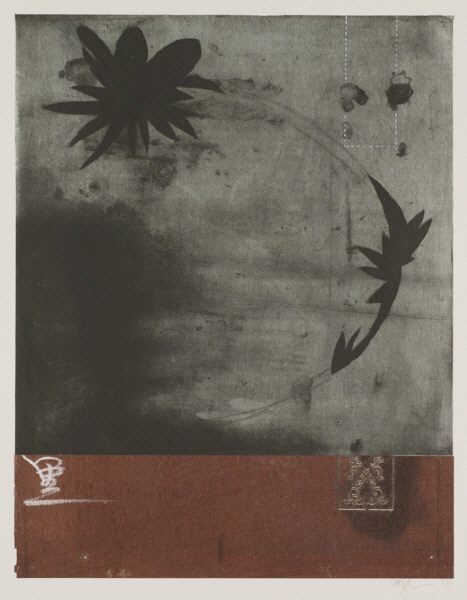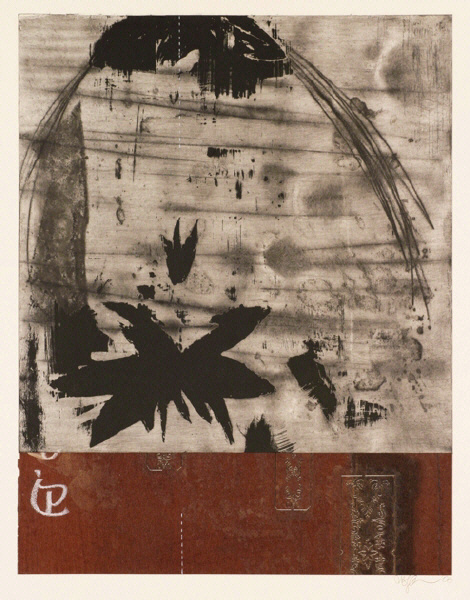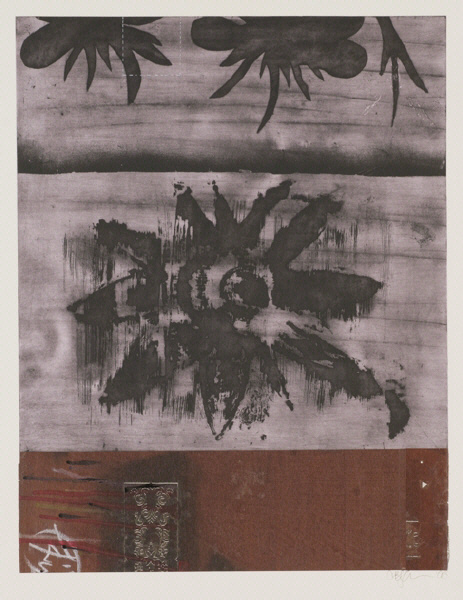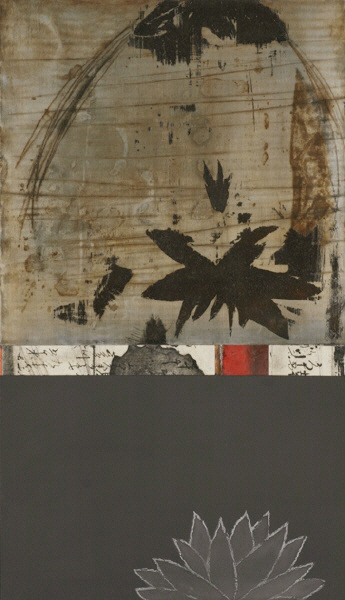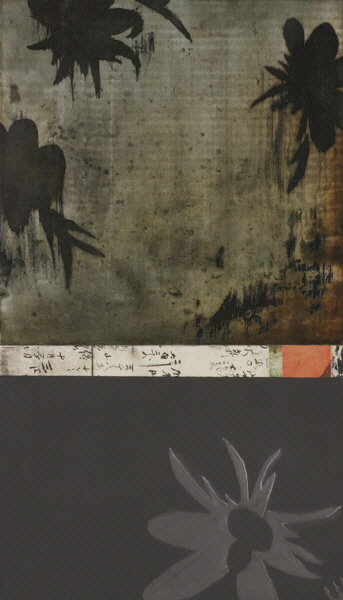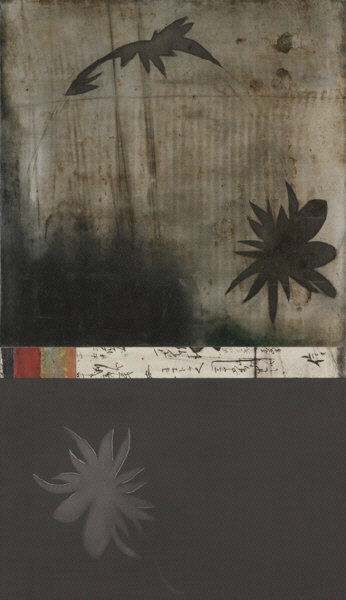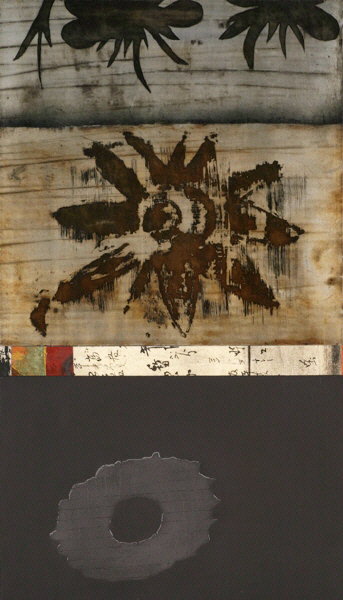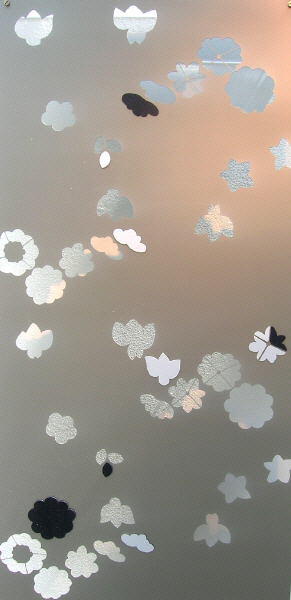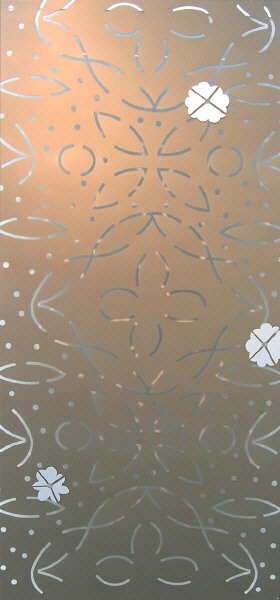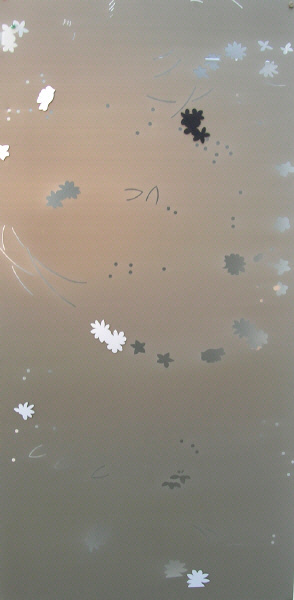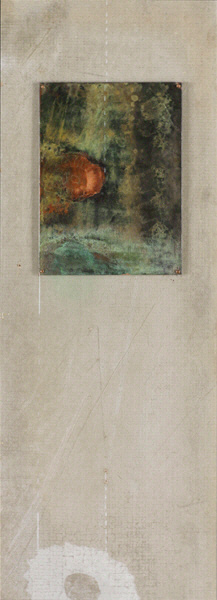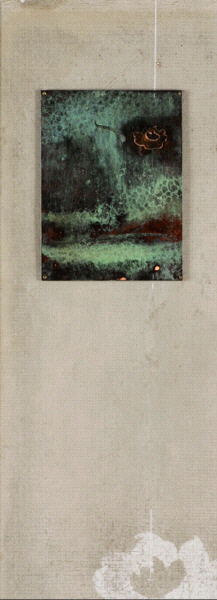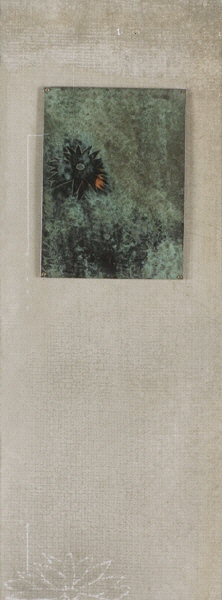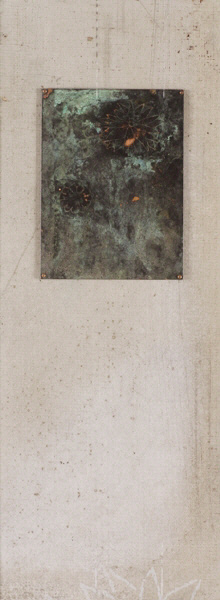Tania Gleave
Tania Gleave
May 16, 2006 – Jun 04, 2006
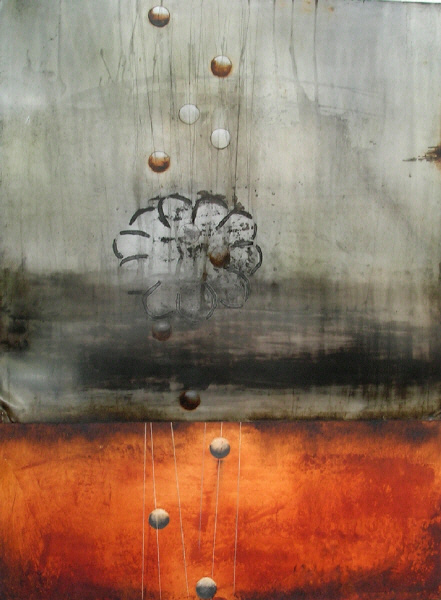
A Place That Defies the Rush of a Day
39 in x 29 in
etched, patinated steel, oil on panel
Opening Reception, Thurs. May 18, 6:30 - 8:30 pm
Recently I came across a collection of Late Edo (1781-1868), Meiji (1868-1912) and Taisho (1912-1926) Period Japanese Kimono stencils called Katagami. I had a conversation with one of the shop owners about their use and function and about kimono designs of certain periods. I was reminded of my studies in Japanese history and art at university and also classes that I took during my Textile Art and Design programme at college some years later. We had to make our own katagami stencils from pressed mulberry bark paper and I showed little aptitude for the main requirement of this technique: clean precision. I moved on from that project quickly and gave it no thought again until I came across the real thing.
As I walked away from the shop that day with a few katagami stencils under my arm the inspiration for my next body of work became clear. It was to be these beautiful, old, deep brown persimmon and indigo stained bits of numbered paper each of which has a composition of cut out shapes that comprise one layer in many to complete an intricate image of repeating patterns on a length of kimono silk. The source of my inspiration was to come from my past studies and the shapes, forms, textures and tones of the katagami. I would go to my studio and work on a series to create surfaces which combine old techniques with new technology. I see the series as the meeting of different cultures in time. Source Past Surface Present.
The series includes a wide variety of media which reflect various interpretations of surface, texture, and abstract representations of natural forms with a juxtaposition of unnatural scale. By projecting light through the stencils and drawing, photographing, painting, etching, and printing the resultant shapes, the initial exploration revealed increasing potential for development and experimentation. The process of this exploration seemed to take on a life of its own, the more that one idea was examined, the more possibilities were exposed. That is the opiate, the ceaseless learning uncovered in the process of exploration, drawing on the experiences of one's past and forming it into a tangible interpretation.
